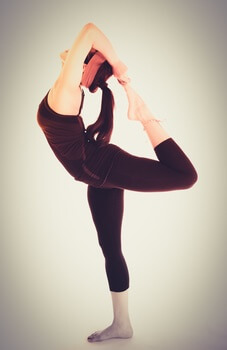Excited. Energized. Eager. That’s what it means to “get hype.” Beginning this month, I will be writing a regular column for pelinks4u called “Get HyPE.” I want to discuss topics that will excite and inspire the physical education community. My goal is to encourage all of us to think about or try something new every month. The name of the column also has a secondary meaning. It includes the name my students call me, “G-H,” and the abbreviation for physical education, “PE.”
In this month’s column I’m asking readers to think about something that’s energized my thinking all summer. When will we start calling “nontraditional PE” just…PE? Why do we refer to the roll-out-the-ball style of teaching as “traditional” and the use of best practice as “nontraditional?” When will the nontraditional become the traditional?

Let me give you two examples:
First, using small-sided games maximizes our students’ participation, increases the level of inclusion in our gyms, and allows us to create planned, progressive lessons that result in a higher level of student engagement. Providing the opportunity to play small-sided games and mini-activities is best practice in physical education; however, the method of creating small-group games is often called “modifying traditional games.” Why?
Second, our students should be exposed to a wide variety of activities so they can discover which activities they enjoy most. In a quality physical education program, students learn how to perform fundamental movement skills and movement patterns, and learn to apply various strategies and tactics in game play. Unfortunately, many curricular documents, books, and articles classify activities into two groups. They either fall under “traditional sports” (volleyball, bowling, soccer, and softball) or “nontraditional,” “innovative,” or “uncommon,” activities (yoga, orienteering, dance, cooperative games, and combatives). Why?
Don’t we want the uncommon, along with the traditional, to become the common?
According to SHAPE America, “the goal of physical education is to develop physically literate individuals who have the knowledge, skills and confidence to enjoy a lifetime of healthful physical activity.” PHE Canada states that, “individuals who are physically literate move with competence and confidence in a wide variety of physical activities in multiple environments that benefit the healthy development of the whole person.”
In order to fulfill this goal, it is our responsibility as physical educators to provide a wide variety of activities (from both categories!) on a variety of surfaces (think land, snow, ice, water!) throughout the school year.
Okay, it’s time to Get HyPE.
What nontraditional activity can you introduce to your students this school year with the intent of it becoming traditional?
How can you change the definition of nontraditional PE in your classroom?
Please feel free to start a conversation about this topic with me on Twitter @GHSaysRockChalk, using the hashtag #GetHyPE.

